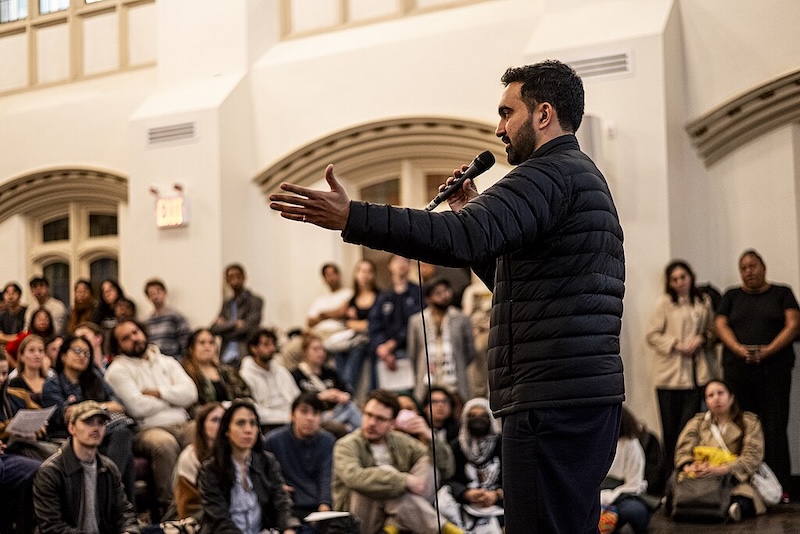
younger and better-looking, maybe, but still representing the Democratic Party
The Center for Working-Class Politics and Jacobin Magazine, from the vaguely left wing of the Democratic Party that includes Zohran Mamdani and Alexandria Ocasio-Cortez, have released a study entitled “Working-Class Social and Economic Attitudes: An Analysis,” which recommends a strategy for calibrating an appeal to working class voters sufficient to re-take the U.S. Senate.
Their conclusions are hardly different from any that mainstream Democrats may have drawn from their stinging rebuke in 2024: stay away from social issues (“identity politics”), focus on bread-and-butter economic issues, strengthen the social safety net, but don’t even dream of tackling head-on the rot at the heart of America’s Capitalist economic system. And even after Gaza you still won’t find the words “war” or “foreign policy” in the CWCP-Jacobin report. America’s #1 budget expense — war — doesn’t even rate a mention.
For the “progressive” Democratic authors of this report, the Democratic roster is already filled with sufficient careerists and machine Democrats — if only they employ “careful persuasion” — to woo back the red-hatted American voter with a carefully calibrated, poll-tested, and lab-grown shpiel.
“We have presented a comprehensive analysis of the attitudes and preferences of working-class Americans, all against the backdrop of the Democratic Party’s decisive defeat in the 2024 presidential election. The relevance is clear: over the past several decades, the Democratic Party has increasingly pivoted away from the working class, leaning into a misguided assumption that they would still retain a large enough voter base to be electorally successful. Kamala Harris’s defeat proves the weakness of that assumption. The only realistic hope the Democrats have for building a political base capable of winning national elections and taking consistent control of the US Senate is to win back a significant portion of the working class. Our analysis offers insights into how this might be achieved. Our findings suggest that the Democratic Party would be wise to capitalize on the working class’s strong preference for policies that are economically egalitarian — particularly predistributive policies that involve strengthening worker rights and leverage as well as existing universal social insurance and health care programs — while deemphasizing potentially divisive social policies. Several of the economic policies we analyzed here, such as those concerning increased job security, wages, and worker power, would make a strong foundation for a successful campaign.
The right candidates for this plan are out there. And given our findings, the Democratic Party would be wise to embrace such candidates, while eschewing those politicians on its current roster that have comparably little to offer the working class. The stakes couldn’t be much higher. The second Trump term has combined authoritarian populist rhetoric with a slash-and-smash approach to the federal government that threatens to undermine democracy as we know it and can only result in a greater concentration of wealth at the top and a hollowed-out state incapable of solving our biggest national problems.
Yet at the same time, working-class voters’ skepticism toward government and government spending poses a serious challenge to progressives who advocate bold, transformative economic policies. While such programs might be necessary to turn around decades of neoliberal policies that have left so many working-class communities behind, careful persuasion is still needed to win back working-class trust. This is both an indispensable task and an extraordinarily difficult challenge given the current state of working-class attitudes. Nonetheless, if we have any hope of undercutting Trump’s savvy exploitation of populist resentment, it’s our only option.”
Comments are closed.